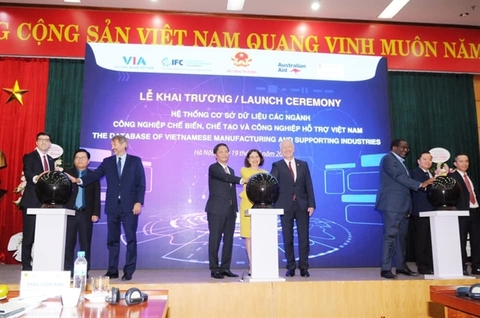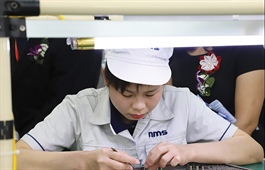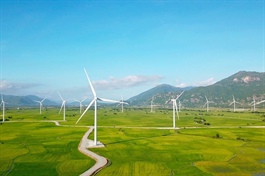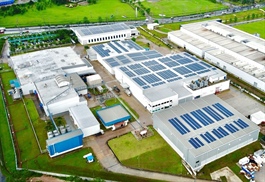A Vietnamese perspective on the evolution of Industry 4.0
A Vietnamese perspective on the evolution of Industry 4.0
Humankind has observed three industrial revolutions in the past 260 years. The first recognised James Watt as the typical pioneer, inventing the steam engine in 1760 which helped with performing tasks previously carried out by hand. The second revolution, between 1870 and the first World War, was inspired by the prolific inventor Thomas Edison with electric light, the telephone, and many machine advances which paved the way for mass production. The next era placed focus on digital changes resulting in computers and the birth of the internet in the second half of the 20th century.

Nguyen Hoa Cuong - Deputy director Central Institute for Economic Management
|
And within the past several years, policymakers and think tanks around the globe have drowned the media with references to the Fourth Industrial Revolution, or Industry 4.0. Names such as Elon Musk with trendy high-tech products like self-driving Tesla vehicles, or his ambitious plan for colonising Mars have ignited and visualised human dreams, once again, beyond the horizon of sci-fi movies.
The term Industry 4.0 first appeared at a Hannover exhibition in 2011 and later in a report by the German government in 2013. This has marked the birth of a series of new technologies, combining all the latest intellectuals in physics, digitalisation, biology and more, and brought about fundamental changes in all sectors and the economy as a whole.
Currently, Google returns around 322 million entries for the phrase “Industrial Revolution 4.0”, which is still fewer than the 765 million entries for “artificial intelligence”, 5.27 billion entries for “Internet of Things” (IoT), and the massive 5.46 billion entries for “COVID-19”.
Industry 4.0 introduced and realised cutting edge technologies such as 3D printing, AI, augmented reality, the cloud, IoT, big data, and blockchain, among other popular forms such as space technology, neurotechnology, new computing, advanced materials, biotechnology, and a lot more.
Industry 4.0 has helped strengthen enterprise competitiveness through close co-operation and synergy put in joint development of product and service made by a robot or a coder. It contributes to businesses’ efforts in reducing operation and product costs so that profit and productivity are increased, which in turn lead to GDP growth.
Furthermore, it optimises production processes when inter-connecting smart factories and allowing production systems react quickly and brilliantly to respond to customer needs and other changes of the market. New economy models can rise everywhere in the world, integrating with each other on inputs and outputs, and creating a global optimum production network.
On the other hand, Industry 4.0 directly nurtures the acceleration of technology advancement through a series of platforms such as smartphones and widely-used apps such as wallets, health trackers, translation apps, and maps. Industry 4.0 can also provide instant feedback on customer experiences.
However, there are a number of concerns including cybersecurity and privacy. When data is digitalised and stored somewhere in hard drives, IoT appliances now face bigger risks than ever; a disaster though unwanted could take place when strategically important or classified data is stolen.
Also, the skills and the competency of the labour force need to be constantly improved when they are a part of an Industry 4.0 process. Workers need to continuously update themselves amid the disruptive change of technologies or they will be left behind or laid off as robots take over some jobs. In addition, equipment has its own disadvantages – the over-dependency on them can lead to serious losses and an unbalanced financial status caused by improper investment decisions.
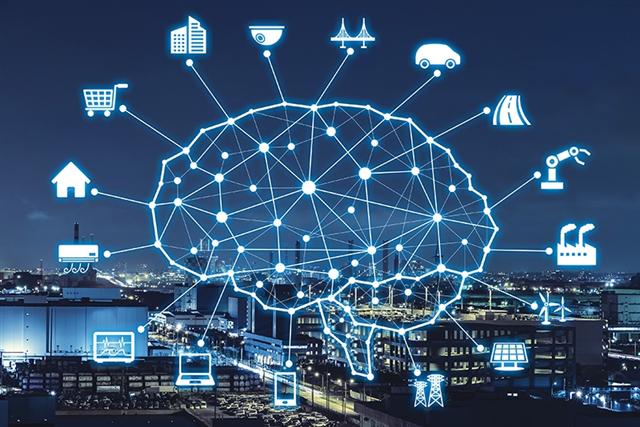
The Fourth Industrial Revolution is the age of big data, machine learning, AI, and the Internet of Things
|
A national strategy
Acknowledging the importance of Industry 4.0, the Ministry of Planning and Investment (MPI) made its own initiative in proposing the need of a national strategy, and collaborated with international and domestic consultants to come up with a draft strategy last year.
Having received comments and instructions from Deputy Prime Minister Vu Duc Dam and line ministries, the MPI came up with a second draft for the national strategy earlier this year and consolidated further comments from government institutions as well as from the business community, whose activities are expected to be intensively and extensively fostered by the strategy.
The current draft of the National Strategy for the Fourth Industrial Revolution contains six important solutions. They are heightening the quality of institutionalisation and capacity for policy formulation; developing infrastructure for interconnection and database usage; human resource development; developing e-government and digital government in the long term; enhancing national innovation capability; and investing in selected technologies for Industry 4.0.
The draft strategy also set out for all line ministries some general and important tasks such as:
- Developing plans for digital transformation in different sectors;
- Developing e-government and digitalised public services delivery;
- Public service delivery agencies and affiliated enterprises utilising technology application in service provision;
- Reviewing current regulatory frameworks to enable a business environment conducive for new economy models;
- Restructuring science and technology units;
- Researching potentialities of Industry 4.0-specific technologies;
- Instructing state-invested enterprises to research, apply, and invest in Industry 4.0 applications; and
- Developing and implementing a public-funded business support programme in technology transfer for Industry 4.0.
Apart from what the government is doing, we see varying things in different businesses here in Vietnam. Vingroup may have taken the leading role when using 1,200 ABB robots in its factory welding the bodies for VinFast’s sedan Lux A2.0 and SUV SA2.0. To some extent, big private corporations such as Viettel, FPT, other tech firms such as MISA, VNG, and Vinapay can be seen as the group of leading Industry 4.0-ready Vietnamese businesses.
State-owned enterprises seem to indicate a modest level of interest, while a lot of Vietnamese startups have in the past few years confidently taken advantages of related technologies, such as GotIt, Go-Viet, Sendo, Lozi, and of course the list does not end there.
Strong recommendations
Industry 4.0 has been bringing profound and fundamental changes not only in a global context but also in the perspective of Vietnam, both with a positive and negative influence. For the country, there will be likely a huge opportunity through the Fourth Industrial Revolution with the robust process of digitalisation and the combination of the prevalent and leading technologies of today. In order to ride these waves, Vietnam needs to solve related issues with the highest efficiency possible.
First, institutionalisation should not be the burden which hinders the application of technologies so that the new economy can be applied in everyday life.
Secondly, employees’ skills should be constantly upgraded.
Third is the need for enterprise development, especially entrepreneurship enhancement based on science, technology, and innovation.
Lastly, Vietnam must learn from other countries and their experiences when dealing with Industry 4.0 issues, because no country has either succeeded or failed in this.
If Vietnam can take up the good opportunities and overcome several barriers, it can narrow the gap with more developed countries and soon achieve the target of becoming a modern industrialised country.





